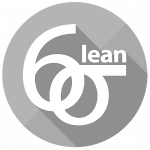YELLOW BELT COURSE OVERVIEW
The two-day introductory Yellow Belt noncredit course is the foundation program of Lean Six Sigma and its methodologies. The main goal of the Yellow Belt course is to provide an introduction to Lean Six Sigma and how it can be used by individuals and teams to improve customer satisfaction, reduce errors, increase efficiencies, and work more effectively with teams to solve problems. With this foundation of knowledge and skills, participants can progress to more advanced levels of Lean Six Sigma.

Certificates of completion will be awarded to participants who fulfill course requirements.
Cost:
- $249 – K-State student
- $449 – K-State faculty/staff
- $499 – Public
UPCOMING OFFERINGS
- August 15-16, 2024 (in person on K-State Manhattan campus, 8 a.m. to 4:30 p.m.)
- September 19-20, 2024 (in person at Blue Cross and Blue Shield of Kansas, 1234 SW Polk St., Topeka, Kan., 8 a.m. to 4:30 p.m.)
AUDIENCE
- All industries and types of organizations
- Individuals and organizations just getting started with Lean Six Sigma or want to know more about it
- Project leaders or team members who will be working on improvement projects
LEARNING OUTCOMES
Upon completion of this course you will:
- Understand the history and background of Lean Six Sigma
- Know how to participate in Lean Six Sigma projects that deliver meaningful results
- Be able to use several key Lean Six Sigma Tools
- Understand the DMAIC problems solving methodology
- Understand the Crimson Corporation Process Improvement Roadmap®
- Be able to make process improvements in your work area
- Understand the importance of “soft skills” in a LSS project
FORMAT
The course is generally taught in two consecutive days in an online or classroom setting from 8 a.m. to 4:30 p.m., with a break for lunch (not included in registration). It is designed to be extremely interactive and has a mix of learning methods including lecture, simulations, individual and team exercises, and videos.
MATERIALS
A Yellow Belt workbook created by Crimson Corporation will be provided and will be the main instructional document used during the course. There are additional books and reference material used in the class and will be provided. All instructional material is the intellectual property of Crimson Corporation.
PREREQUISITES
Students need no prior experience with Lean Six Sigma to attend this course.
KEY TERMS
Students will gain confidence understanding these terms and Lean Six Sigma concepts:
- DMAIC process improvement methodology
- Project charter
- Voice of the customer
- Swim lane process map
- Fishbone root cause analysis tool
- 5 Why root cause analysis tool
- Pareto charts
- Graphical analysis tools
- Measurement systems analysis (MSA)
- Measurement plan development
- Hypothesis testing
- Control charts
- Lean principles
- 7 Wastes
- 5S
- Kanban
- Kaizen events
- Continuous flow processes
- Value stream maps
COURSE OUTLINE
DAY 1
Section 1: Lean Six Sigma Overview
- History of quality
- History of Lean and Six Sigma
- Goals of Lean Six Sigma
- Process improvement overview
- Process variation overview
- Operational enemies of Lean
- Design for Six Sigma
- DMAIC
- Soft skills for Lean Six Sigma
- Implementing Lean Six Sigma
- Organizational change management
- Lean Six Sigma belt levels (White, Yellow, Green, Black)
Section 2: Define the problem/opportunity
- Understand how to identify improvement opportunities
- Collect Voice of the Customer data
- Develop a Project Charter
- Create high level “As Is” process maps
- Plan the project
Section 3: Measure the problem/opportunity
- Understand the current process
- Create a measurement plan
- Perform a Lean Assessment
- Execute the measurement plan
- Validate measurement systems
DAY 2
Section 4: Analyze the problem/opportunity
- Analyze the data
- Analyze the process
- Identify variances between current state and goal
- Perform root cause analysis
- Perform hypothesis testing
Section 5: Improve
- Determine potential solutions
- Test/pilot solutions
- Update process maps and standard operating procedures (SOPs)
- Create a rollout plan
- Implement the final solution
Section 6: Control
- Develop and implement a control plan
- Validate achievement of goals
- On-going tracking and reporting
- Institutionalize the improvements
- Rewards and recognition
Section 7: Lean
- Lean background
- Introduction to Lean tools
- 7 Wastes
- Value stream mapping
- 5S
- Kaizen
- Pull systems